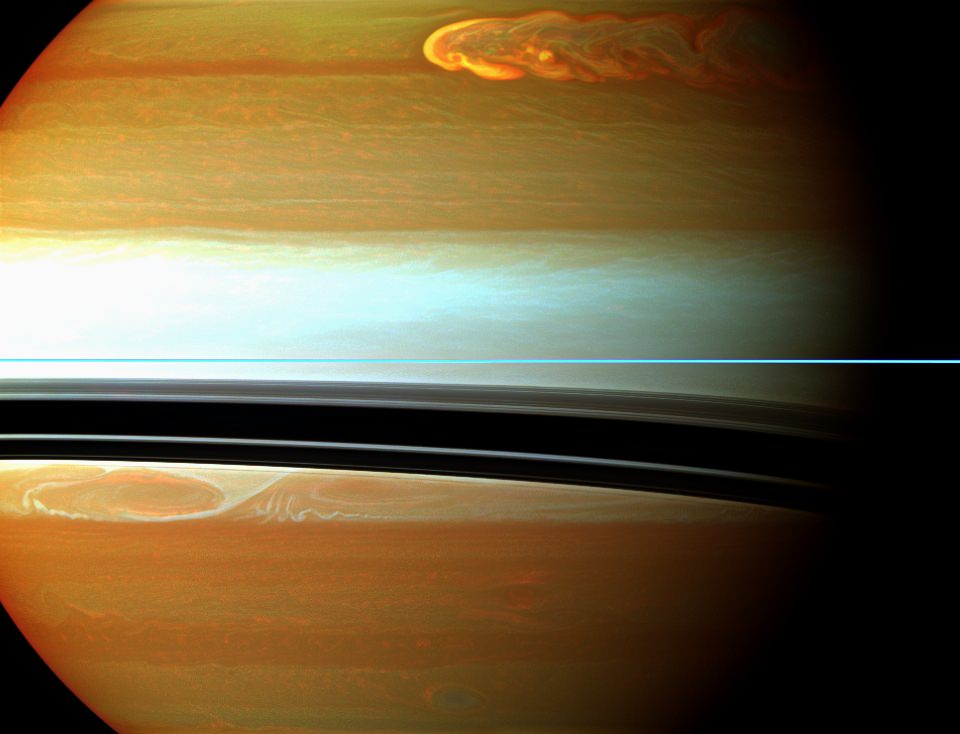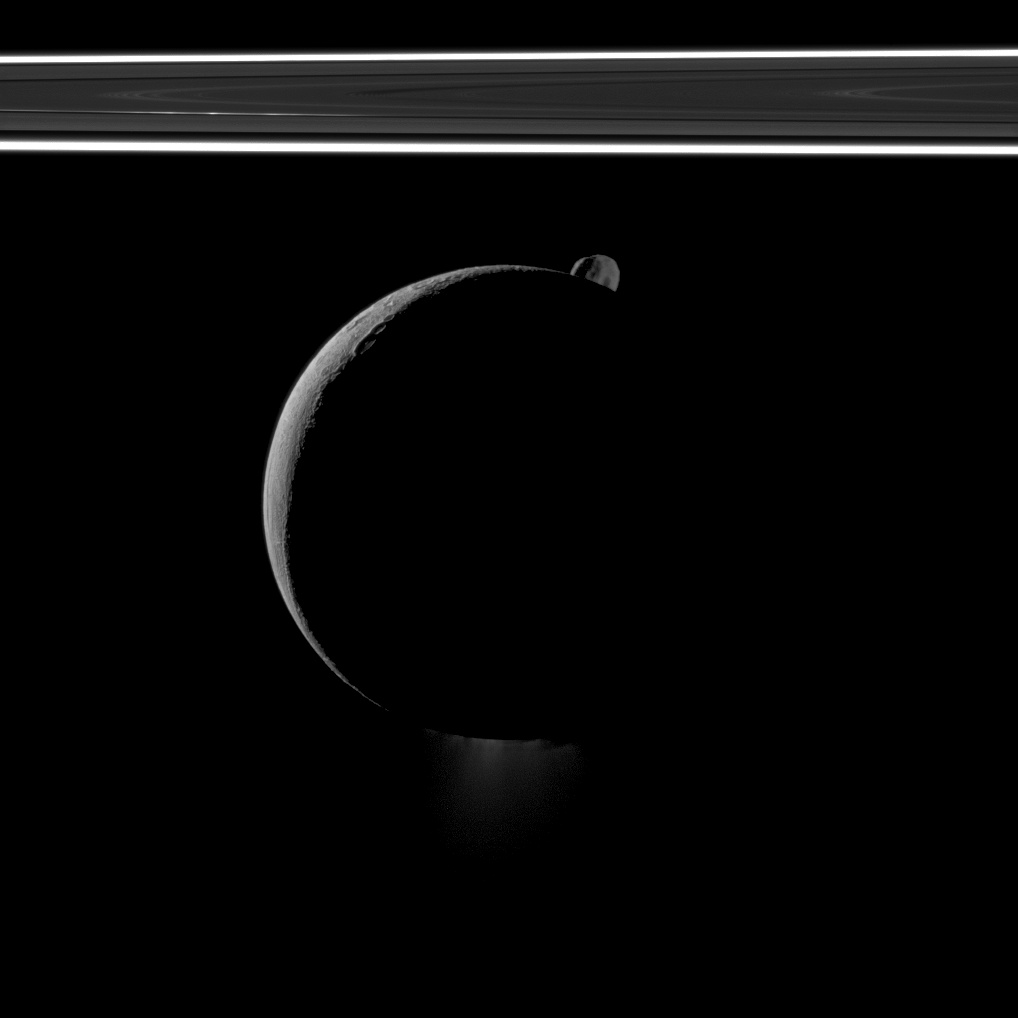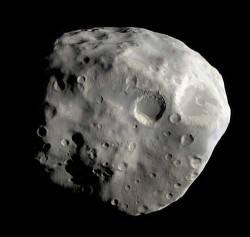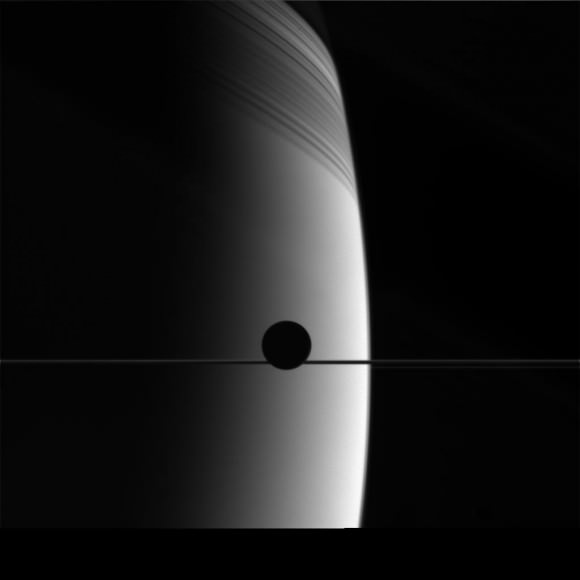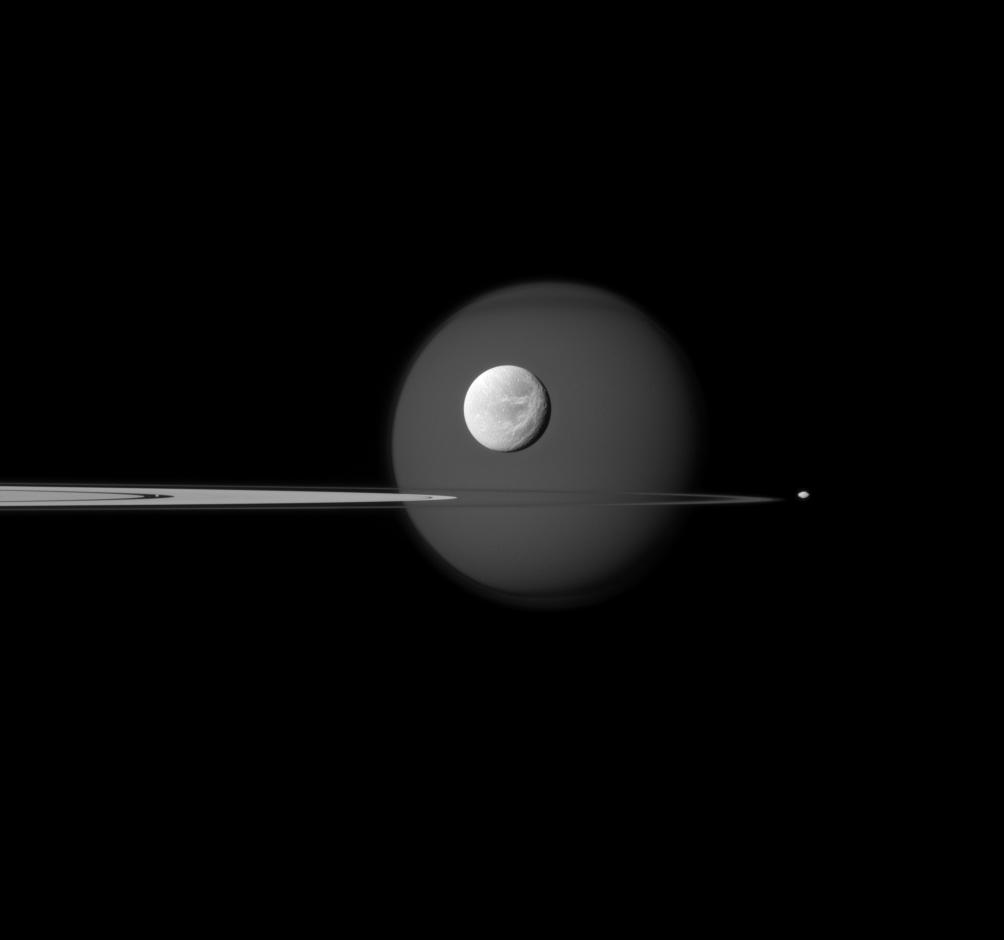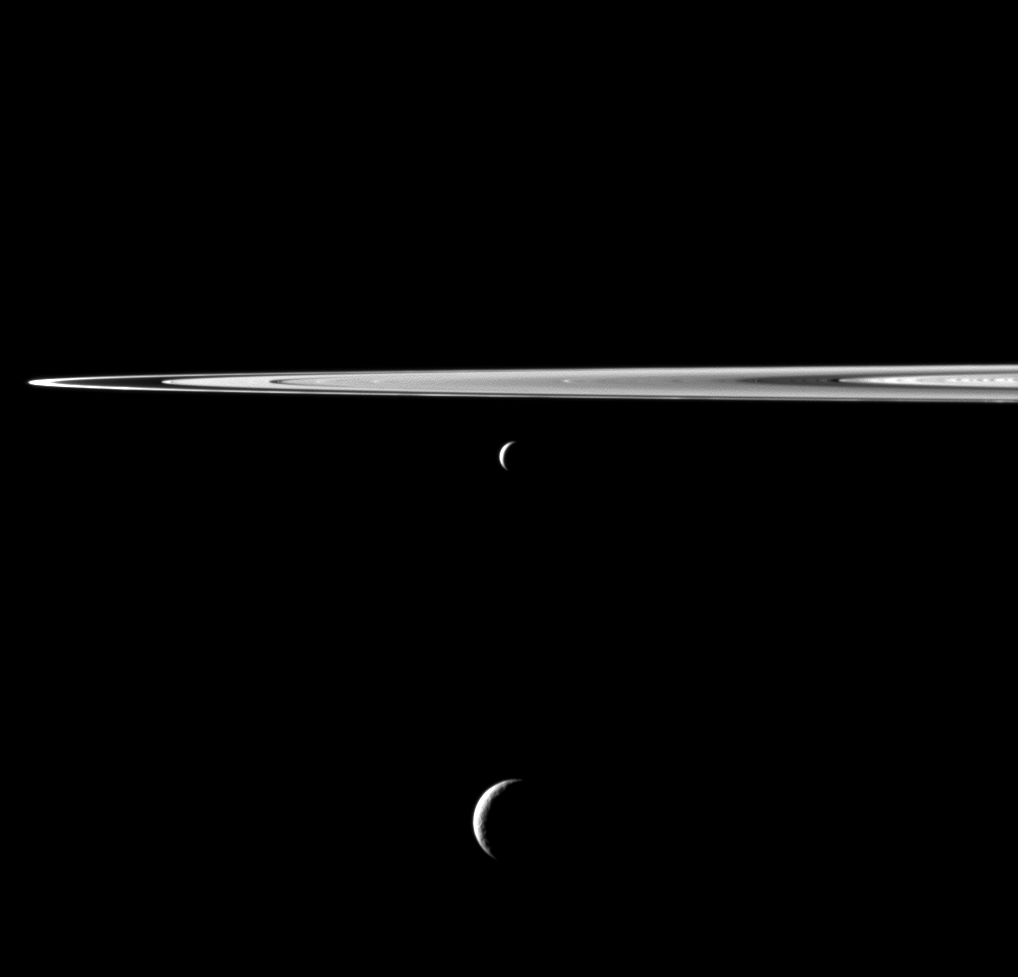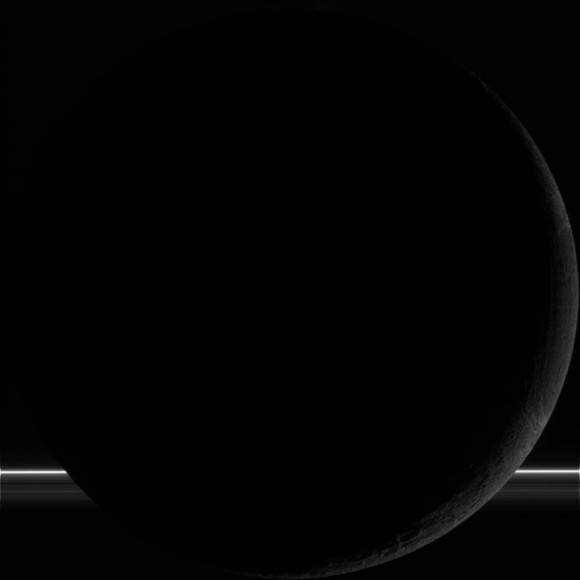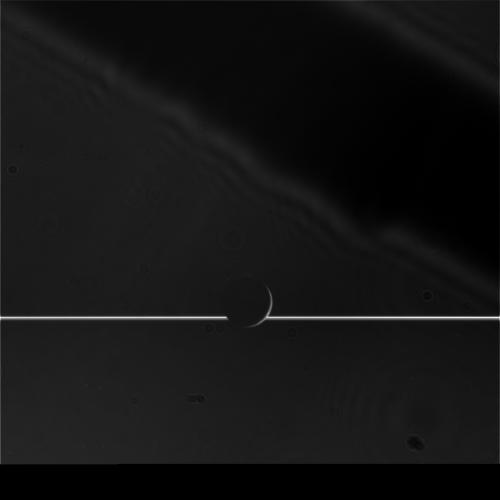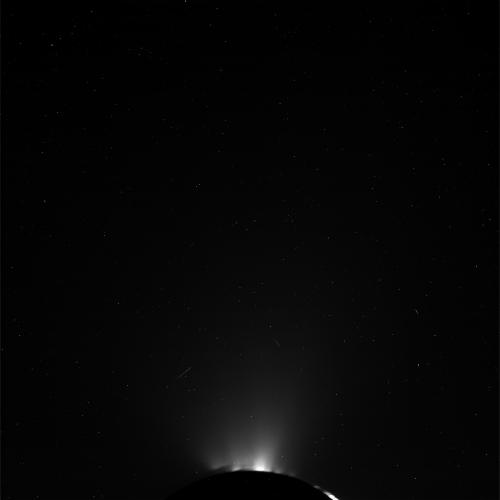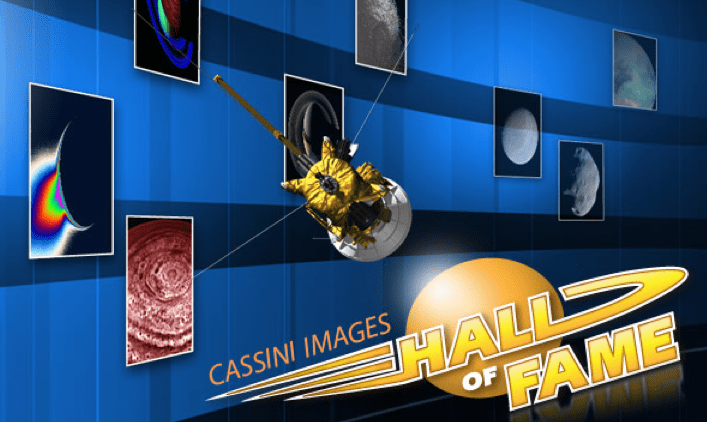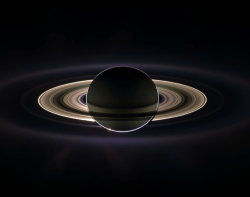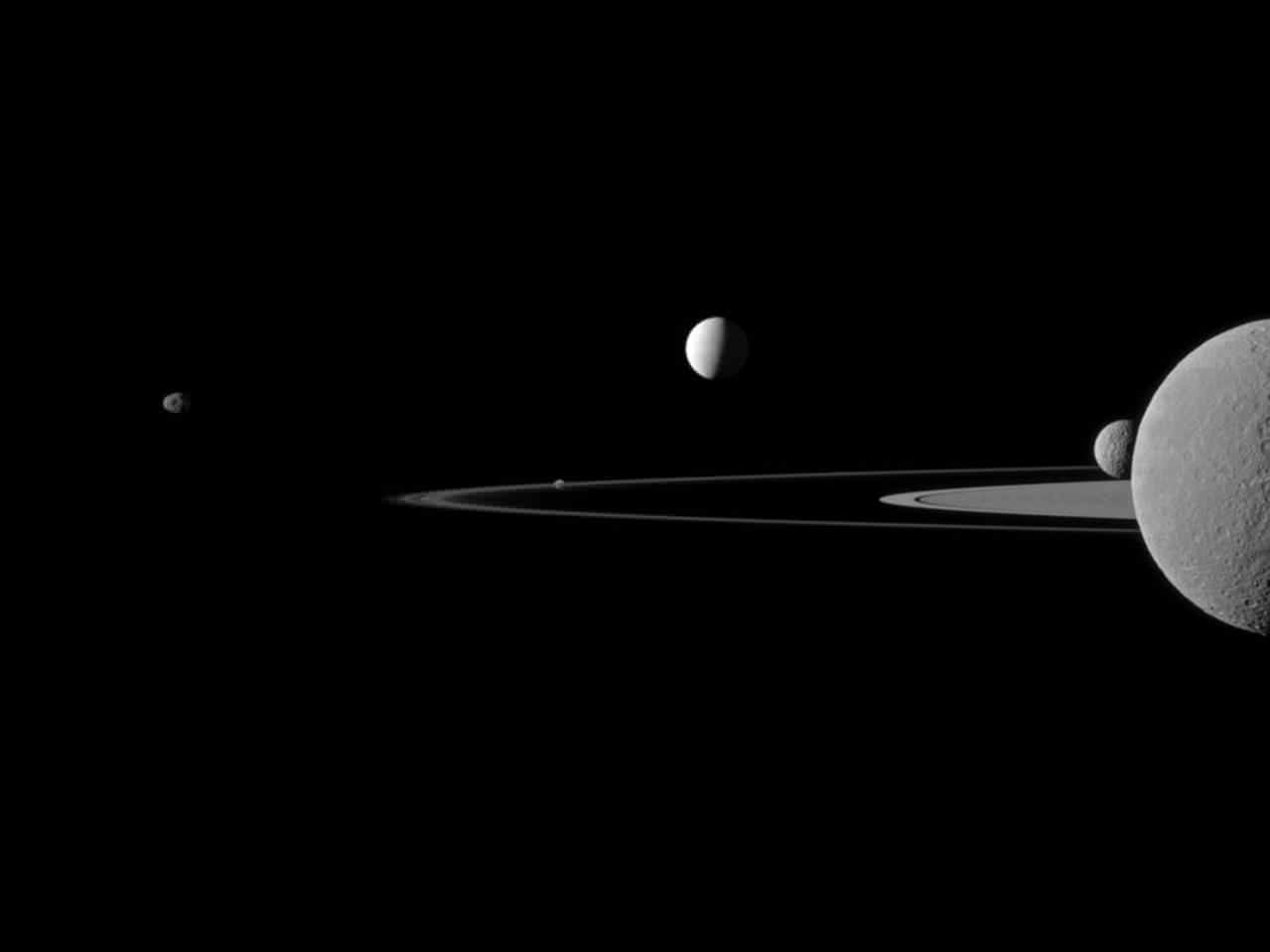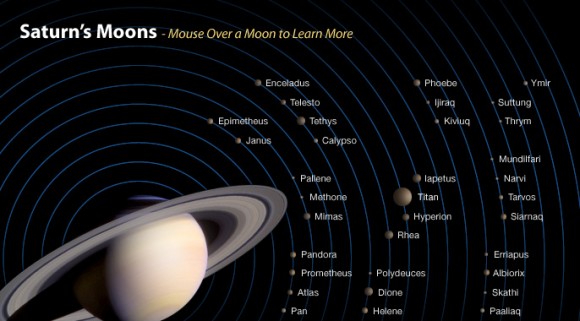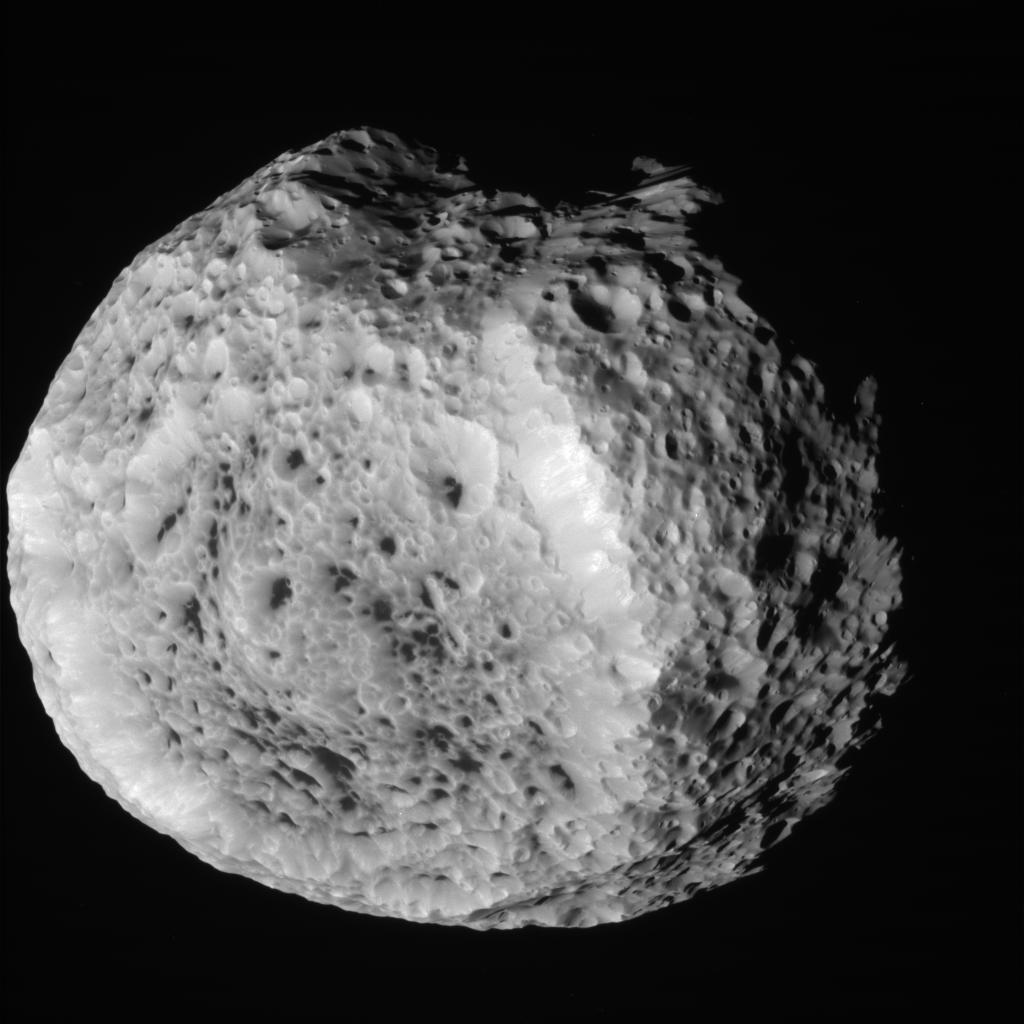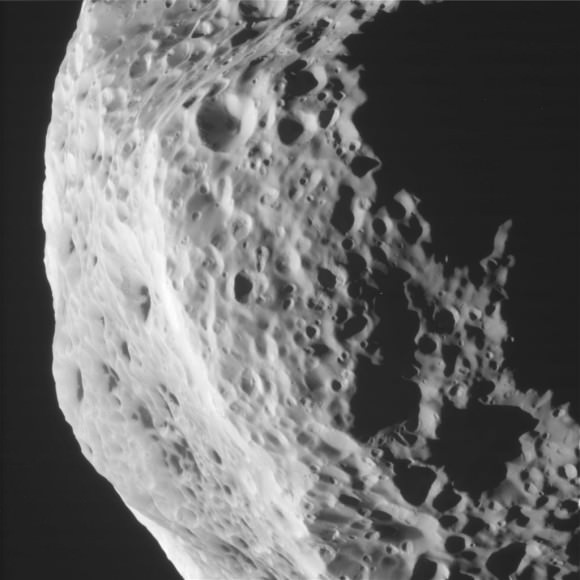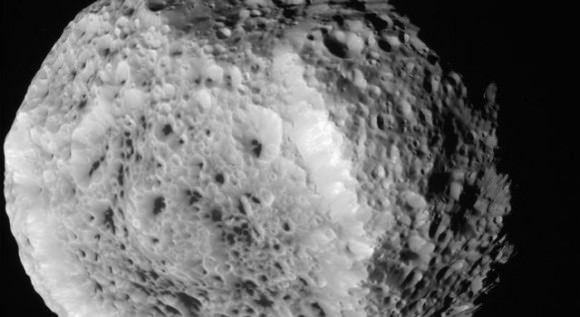[/caption]
Nearly a year ago a small, bright white storm emerged on Saturn’s northern hemisphere. This storm has now wrapped around the planet, creating a colossal atmospheric disturbance that has become the largest storm seen on the planet since 1990. And the Cassini spacecraft has been there to see it all.
“It is the singular distinction of being in orbit, and able to turn a scrutinizing eye wherever it is needed, that has allowed us to be present to witness this extraordinary phenomenon,” said Carolyn Porco, the Cassini Imaging Team Leader. “The storm has spread to become a planet-encircling colossus, a wide kaleidoscopic band of commingled waves, vortices, and eddies, all in continuous swirling motion …. a mesmerizing display of snaking, sensuous, churning, turning, chaotic, roiling atmospheric turmoil.”
If Porco sounds like she’s waxing poetic, she has good reason. The images put out by the Cassini imaging team today are a “sublime visual extravaganza,” and both true and false color images are gorgeous to behold.

The huge storm extends around Saturn’s northern hemisphere and from north to south spread approximately 9,000 miles, or 15,000 kilometers. It has become the largest observed on Saturn in the past 21 years, and the largest by far ever observed on the planet from an interplanetary spacecraft. What timing for Cassini to be there!
“Seven years of chasing such opportunities across the solar system’s most magnificent planetary system have already made Cassini one of the most scientifically productive planetary missions ever flown,” said Porco on the CICLOPS website. “And with any luck, there’ll be a great deal more to come.”

Cassini has taken hundreds of images of this storm as part of the imaging team’s “Saturn Storm Watch” campaign. Cassini has been able to take quick looks at the storm in between other scheduled observations, of either Saturn or its rings and moons.
Other instruments on Cassini have detected the storm’s electrical activity and revealed it to be a convective thunderstorm. Its active convecting phase ended in late June, but the turbulent clouds it created linger in the atmosphere today.
“The Saturn storm is more like a volcano than a terrestrial weather system,” said Andrew Ingersoll, a Cassini imaging team member at the California Institute of Technology in Pasadena, Calif. “The pressure builds up for many years before the storm erupts. The mystery is that’s there’s no rock to resist the pressure – to delay the eruption for so many years.”
This storm’s 200-day active period makes it the longest-lasting planet-encircling storm ever seen on Saturn. The previous record holder was an outburst sighted in 1903 which lingered for 150 days. The large disturbance imaged 21 years ago by NASA’s Hubble Space Telescope was comparable in size to the current storm. That 1990 storm lasted for only 55 days.
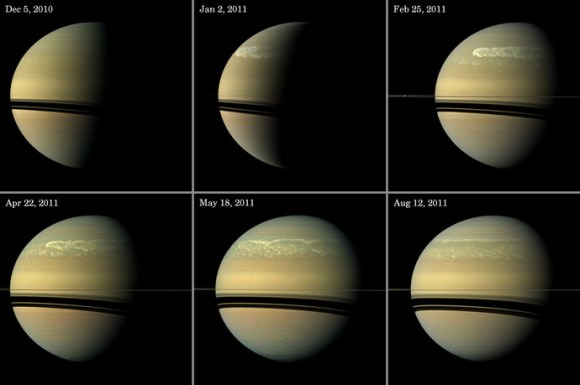
See more images and animations of the storm at the CICLOPS imaging website.

